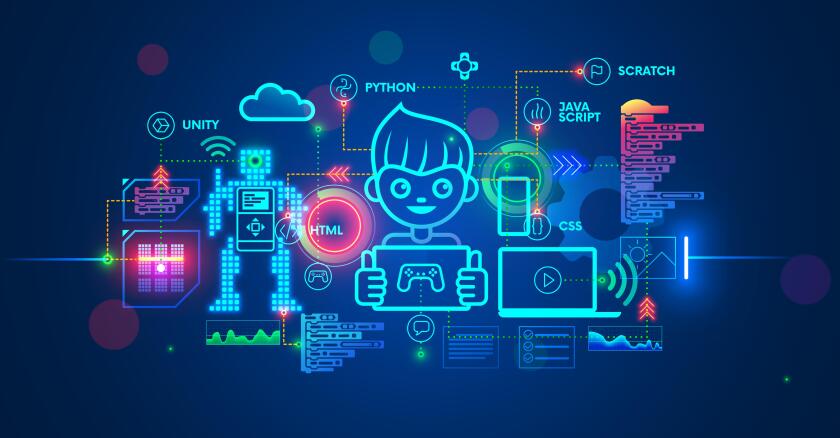Comprehensive Organization Guides for Advancing Modern Technology Education And Learning in Schools and Colleges
The assimilation of technology education right into college and college curricula has come to be an essential crucial in preparing pupils for an increasingly electronic workforce. Extensive business overviews play a crucial duty in this change by outlining the necessary structures for efficient program application, cultivating crucial market partnerships, and determining instructional results. As educational establishments strive to align themselves with market needs, the obstacles and opportunities offered by these overviews merit a closer evaluation. Education. What specific strategies can be embraced to maximize their effect on both pupils and teachers?
Significance of Technology Education
As innovation remains to develop at an unprecedented pace, the relevance of modern technology education and learning has actually ended up being significantly evident in today's society. The combination of innovation into various elements of life requires that individuals have a fundamental understanding of technological principles and applications. This understanding not only improves employability yet likewise fosters vital thinking and analytical abilities crucial for browsing a dynamic workforce.
In schools, modern technology education and learning equips pupils with the capability to adjust to rapid adjustments in markets driven by innovation. It urges imagination and equips learners to involve with arising innovations, from expert system to information analytics. In addition, innovation education promotes electronic proficiency, which is vital in an age where info is readily offered yet frequently misleading.

Key Parts of Effective Guides
Efficient guides for technology education must encompass several vital parts to make certain that students get the most from their experiences. A well-defined curriculum is essential, outlining the objectives, finding out end results, and the abilities to be established. This curriculum must be regularly updated to mirror the swiftly evolving technical landscape, ensuring importance and applicability.
Second, extensive sources that include books, online products, and hands-on devices are important. These resources ought to be accessible and diverse, catering to numerous finding out choices and designs. Furthermore, incorporating real-world situations and study can boost understanding and interaction.
Third, assessment strategies must be included to assess student progress properly. These assessments ought to be varied, encompassing cumulative and developmental examinations that align with the learning purposes.
In addition, expert advancement chances for teachers are important. Training programs and workshops can gear up educators with the most recent technological innovations and pedagogical methods.
Finally, cultivating a joint understanding setting urges peer interaction and understanding sharing. By including these key components, guides for innovation education can dramatically boost the discovering experience, preparing trainees for future difficulties in an increasingly digital globe.
Structure Industry Collaborations
Structure strong market partnerships is an important aspect of boosting modern technology education. These partnerships between universities and businesses create a dynamic ecosystem that profits teachers, companies, and trainees alike. By cultivating relationships with sector universities, schools and leaders can align their curricula with the evolving demands of the work market, guaranteeing that trainees get appropriate skills and knowledge.
The advancement of internships, apprenticeships, and mentorship programs serves as a foundation of these partnerships. Such possibilities offer students with hands-on experience, enhancing their employability and sensible understanding of innovation applications. In addition, sector companions can provide understandings right into emerging patterns and technical innovations, enabling teachers to adapt their teaching methods as necessary.
Additionally, collaborations can facilitate accessibility to sources, such as devices, software application, and funding for research tasks. These contributions improve the discovering setting and make it possible for organizations to stay at the leading edge of technological technology. Eventually, building durable market collaborations is vital for growing a proficient workforce that fulfills the needs these days's quickly altering technical landscape, while additionally driving financial development and competitiveness in the more comprehensive neighborhood.
Implementing Innovation Programs
Implementing innovation programs within universities calls for a tactical technique that focuses on both curriculum development and resource appropriation. To initiate successful technology combination, establishments must first analyze their existing infrastructure and identify spaces in sources, consisting of hardware, software program, and personnel training. This evaluation makes it possible for universities and colleges to create a tailored strategy that lines up with their certain educational objectives.
Following, it is crucial to develop an extensive educational program that includes arising modern technologies and sector standards. Collaborating with teachers, industry professionals, and stakeholders can make sure that the educational program helpful resources stays efficient and pertinent in preparing pupils for the labor force (Make Money). Furthermore, expert advancement for professors is critical, as it equips instructors with the skills necessary to properly teach new innovations
In addition, organizations ought to highlight the relevance of hands-on understanding experiences, such as laboratories and workshops, that permit trainees to apply theoretical knowledge in functional settings. This experiential strategy improves Resources engagement and fosters crucial reasoning. Lastly, securing lasting funding with collaborations and gives can assist keep and increase technology programs, making certain long-term success and adaptability in an ever-evolving technical landscape.
Measuring Success and End Results
Analyzing the success and end results of technology education and learning programs is necessary for validating their influence and guiding future renovations. Efficient measurement frameworks must include both measurable and qualitative metrics, giving an extensive sight of program efficiency. Secret efficiency indicators (KPIs) such as trainee registration figures, retention rates, and course completion percents offer useful measurable data.

Integrating standard analyses can even more assess trainees' technical competencies and preparedness for the workforce. Benchmarking against comparable organizations enables contextually pertinent comparisons, highlighting areas for development.
Inevitably, the continual assessment of modern technology education programs fosters a culture of renovation, making certain that they develop abreast with market needs and academic standards. By systematically gauging success, institutions can not just show responsibility to stakeholders however likewise boost their offerings, thus enhancing the learning experience and preparing pupils for the ever-changing technical landscape.
Final Thought

The integration of modern technology education and learning into school and college educational program has ended up being an important vital in preparing pupils for an increasingly electronic labor force.As technology continues to develop at an extraordinary speed, the relevance of technology education has actually ended up being progressively evident in today's society.In instructional institutions, modern technology education equips pupils with the ability to adapt to rapid changes in industries driven by development. By prioritizing innovation education, organizations can cultivate a generation of informed people qualified of leveraging modern technology for social and individual improvement. The execution of robust analysis techniques makes it possible for establishments to gauge success and end results, inevitably improving the general effectiveness of technology education and learning campaigns and preparing pupils for future difficulties.